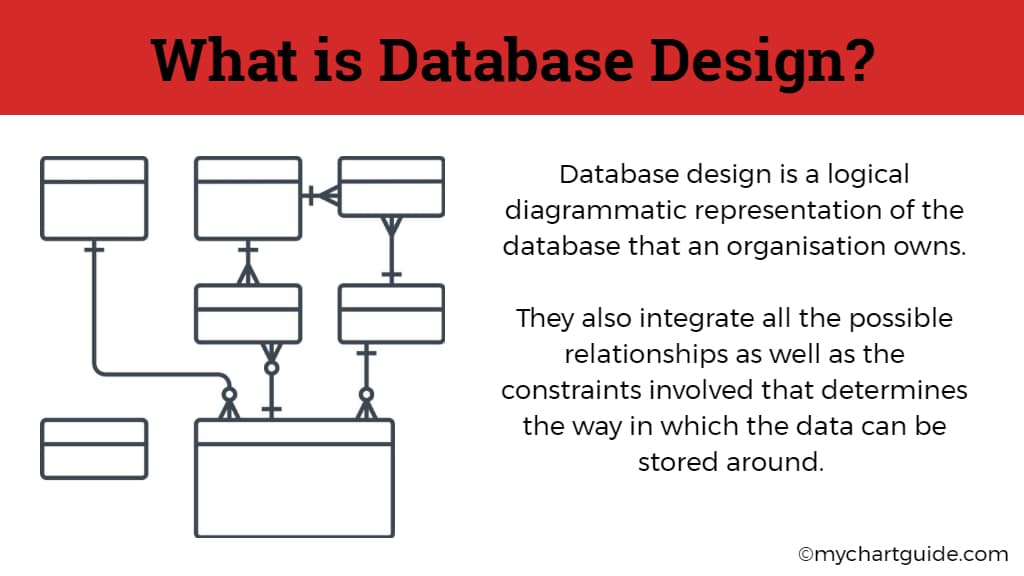Data is possibly one of the biggest assets in today’s date, be it in any of the fields or niches. Owing to the fact that it is not always a small pool of information, keeping everything in check and with good measure can become a hectic task. This is where the database design come into play and helps in the proper organisation of the existing data for better representation and understanding.
But, the process isn’t that easy as it looks. Having a basic idea about database designing can propel the growth of your company but at the same time, if you don’t do it right, it can hamper everything as well.
It is the reason why we have summed up all the necessary information and brought you every last detail that you possibly need to know about database designing.
What is Database Design?
Before anything, it is best that one has a basic understanding of what database designing actually is.
Best Charts, Graphs, and Diagram Tools
- 10 Best Online Chart Maker of 2023
- 10 Best Microsoft Visio Alternatives 2023
- 10 Best Org Chart Maker of 2023
- 10 Best UML Diagram Tools 2023
- 10 Best Entity Relationship Diagram (ERD) Tools 2023
Database design is a logical diagrammatic representation of the database that an organisation owns. They also integrate all the possible relationships as well as the constraints involved that determines the way in which the data can be stored around.
Database models can either have complex representations or even simpler ones, depending on the volume of the data along with the kind of models that people are using to represent it.
What are the types of database design models?
When it comes to database designs, it is important that you first familiarise yourself with the available models because that is what helps you plan the design and finally execute it in a way that provides with results.
In here, we are going to walk you through the various models that are available that you can personally look into.
Relational model
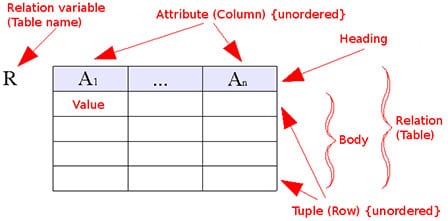
The very first on the list that is worth mentioning about is the relational model.
This is the most basic one under the database design in which the available data is simply sorted out into tables which are termed as relations, hence the name.
They have individual columns and rows and the columns list out the available attributes for the database unit including prices, birth date, zip code etc.
These attributes cumulatively are known as the domain. In this, either one common attribute or a combination of a few are referred to as the primary attribute and is also known as the foreign key when used in other tables.
The rows, on the other hand, are known as tuple and describe the information that fall against the specific attribute on the column. Additionally, this kind of model can also define the one on one or one to many relationship among the tables henceforth.
Hierarchical model

Next on the list of the types of database model includes the hierarchical model which organises and then represents the data into a tree model branching out from a single parent or root.
The ones that branch out are known as the sibling records which are then again sorted out on the basis of the physical order of their storing. This type of design is quite effective in helping describe a number of real life situations and relationships.
Network model
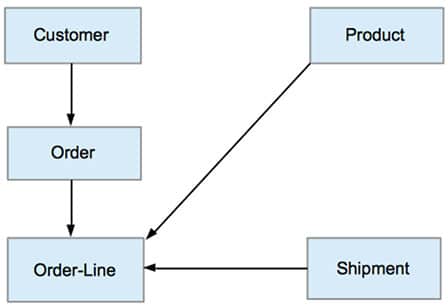
Coming down to the third one, the Network model is one which builds further on the heirarchical model multiple relationships involved around with the linked records, including multiple of the parent records.
As per the mathematical set theory, this one is constructed on the basis of the related records available. The sets are then divided into parent record and the child record.
The child record is again divided into multiple sets further providing with an even further complicated representation of the interlinked relationships between them all.
Object oriented database model
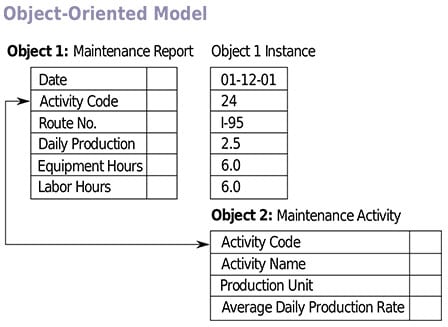
Another one of the popular database model that is worth mentioning is the object based one.
This is mainly used to represent the objects or the reusable software elements combined with several features and methods as well.
Under the object oriented database, there are some further options that one can take a look into.
Some of them include the multimedia database that includes the usage of images and multimedia for representation along with the hypertext database that allows the hyperlinking of one object to the other.
This model is quite beneficial for the post relational database model because the same does incorporate a number of tables.
Object relational model
The next one in the list that is worth mentioning is the object relational model which is a hybrid database model that includes some advanced functionality in the object oriented database model.
Best Charts, Graphs, and Diagram Tools
- 10 Best Online Chart Maker of 2023
- 10 Best Microsoft Visio Alternatives 2023
- 10 Best Org Chart Maker of 2023
- 10 Best UML Diagram Tools 2023
- 10 Best Entity Relationship Diagram (ERD) Tools 2023
In simpler words, this helps the designers include in more images and objected into a database for better representation of the scene around.
Entity relationship model
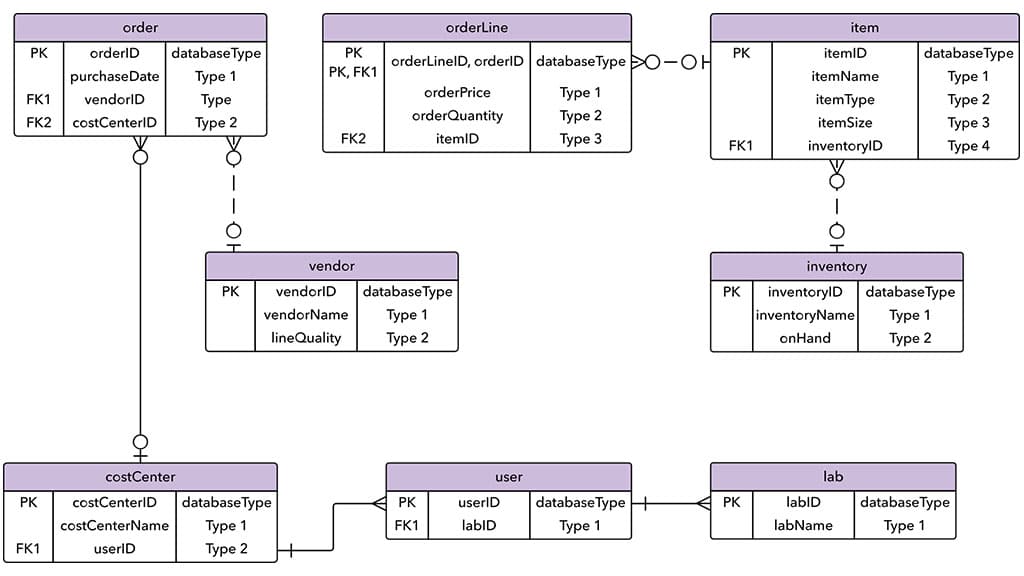
Much like the network model, even this one captures the relationships between the real life entities but doesn’t have any direct correlation with the physical structure of the database as well.
The main objective behind this model is to further streamline the way one conceptualizes the available data in their hands.
The stored data of the people, places or anything in general are referred to as entities, each one of which come with its set of attributes that further come together to make one domain.
- You may like: Best Entity Relationship Diagram (ERD) Tools
Accessory models
With the major and most important ones done, some of the remaining accessory models for the database design that are worth mentioning includes:
- Inverted file model
- Flat model
- Multidimensional model
- Semistructured model
- Context model
- Associative model
Why do you need database designing?
When it comes to database designing, the one common query that many people have is regarding the prospects of the need behind it.
If a company already owns all the data in one place, why is it important that one invest their time and money into designing models that can further help sort the available data out?
This is a question that answers itself.
The process makes it a lot easier for people to manage the existing data, ensuring that it doesn’t cause a further chaos and keeps the risks of error to a bare minimum as well.
All that being said, we want our readers to make informed decision, which is why we are going to sort you out with all the important information that one needs to know about.
Here’s answering why you need database designing.
1. Reduces the risks of duplication and redundancy
With the overpiling data available, it is possible for the same to either be duplicated or there could be data that is irrelevant for the organisation and should just be chunked out.
So, chances are that without a proper streamlined visual representation of the available data into models, it could either be in multiple times because of the duplication or even stay on the database even though it doesn’t make any kind of difference to the same.
Given that so many people use the same database, the risks of error are quite high when you are not using a database management system.
To further streamline the process, it is best that one categorise everything based off of the needs. The information that is put into the database models are done once, which reduces such risks furthermore.
2. Space saving and cost saving
Handling data is possibly one of the costliest affair and people don’t even realise it. Instead of investing in things that don’t matter, it is important that one takes the time out to invest their time and energy into the database models, mainly because of the fact that it helps in saving a lot of space and money.
Companies from across the world are paying more and more money to have their data stored away in a safe space.
Instead of giving away money to someone else, it is smart that one does so by managing the data on their own under with a proper database design because that helps in streamlining the data storage and preventing the risks associated with the process further.
3. Easy to operate
When it comes to database design or even the database management system, many people have this wrong notion that it is tough to operate which is not really the case. It is quite easy, on the contrary and can even be operated by people who don’t have any kind of technical knowledge on the same.
The query language that is used in the database management software for the database designs are quite easy to decipher which regards that it is easy to understand and implement by almost anyone around.
There are several queries provided, using which one can easily update, insert, search or even delete any kind of data that they have put in, which makes it an even easier process.
4. Streamlined database maintenance
As we did mention before, data is a massive thing around and designing it into portions is part of managing the resource at hand.
One of the best reasons why the database design is a much needed affair is all because of the ease it provides for the database management and proper maintenance.
These databases do require a lot of security which is the reason why having everything in models can not just help with the representation but also promote better backup and recovery of the existing models as well.
The main reason why designing helps is all because it streamlines proper management of a large data and information available.
5. Better security
Data is very fragile, if you ask us. Even the smallest leaks and misplacement can cost companies and the general people a lot of money and a threat to their privacy.
With the combination of database design and the management system, it becomes a lot easier to keep the available data encrypted without any kind of issues.
When you have the data designed into models and have a management system overlooking everything, chances are that they won’t allow direct access to the readable data to anyone except the head of the department who is in charge of the same.
There are restrictions that follow through and are thus a very crucial necessity for any of the existing data.
6. Permanent storage
Last but not the least on why database design can help is because it keeps a track of all the data that has been collected till date. You have everything under one roof and that too for a permanent storage reason.
Loss of data doesn’t ensue with situations and models likes these which further streamlines the entire process to an extent.
One can also keep backup and recovery files as per their needs to further get direct access to the same again when the requirements come up.
What are the steps involved in database designing?
When it comes to database designing, know for a fact that the process isn’t the easiest as it seems like it.
There are several elements involved and does require a lot of logical thinking before all the data is streamlined and placed in one graphical representation.
To help you prepare for that and gauge through the process, we have sorted through some of the most important steps that are worth mentioning.
1. Start by defining the problem
The very first and most important factor to look out for before starting with the database design is to define what the objective or the problem is.
Once you define what the problem is, the database can then help in drawing out the solutions for the same.
But, it is also important that one keep an eye out on two of the important factors involved on how the database will be used in comparison to the kind of information that will go into it.
Assess and sort through to find what kind of data will be used in the process, this does make everything a lot easier to sort through. The main aim with the design of the database is to answer the questions people would have.
But, when trying to address such questions in the database, chances are that one might miss out on the invariable questions involved in this.
2. Doing your research
The next step in this is to research through the current available database. In most of the database design projects, you will find that an already existing model for the database design is there.
The same could be in any form, it could be in the form of post it notes or even in the form of spread sheets.
It doesn’t matter what format it is in, it provides with the basic framework and idea for you to proceed with and does mark for a good starting point for your project that you are focusing on.
You can assess the data structure from there, look through the resources you can use. For the most part, the existing database design is what serves as the building block for the new design.
3. Starting with the design
Now that you have the database in hand and the kind of information that you need to put into the format, the next step in line is to start off with the design.
The next stage that you primarily need to focus on is to kickstart with describing and designing the data structure.
This is quite a necessity and it is very important to ensure that each of the marked prospect should signify an attribute related to the database.
Once you have designated the tables and the structure, it becomes a lot easier to proceed with the final design and then integrate the information and see if it provides with any kind of valuable output or not.
Make sure that you have all the objects and structures during this stage sorted out first into fragments and then integrate them based on their relevant positions.
4. Constructing the relationships
There is no point in making a database design if the elements involved in the overall visual representation doesn’t even correlate or have any sort of an established relationship.
This is something you just can’t skip out on owing to the kind of importance it holds. With the data structures done, the next thing to focus on is building the relationship between the elements involved.
Make sure that you have a unique key that every database design has along with an arbitrary one because at the end of the day, that is what that matters the most.
5. Implying rules and constraints
Another important step in the database design that one does need to know of is the implementation of certain rules and constraints.
With the rules and constraints, you do have a better idea about the data entry and even makes the process a lot easier to handle and process.
There are sometimes the general rules and some business rules, depending on the kind of database design that you are indulging in.
When it comes to the constraints, there are a few that needs to be looked over including the social security numbers and the kind of limitations that the design will have. These kinds of constraints help in making the data complete without further questions.
6. Database views and reports
The penultimate stage is to creating the database views and reports now that majority of the database design is complete.
The views are the simple collection of all the available data in the database which is all made accessible for the people in one place.
It could either confer the subset of the existing data table or even include something as complicated as multiple tables joined around.
As for the reports, those are the snapshots of the database at a given point of time and do hold a very significant importance throughout the database designing process.
7. Implementation of the database design in software
You can’t necessary have a completely operational database design if you don’t even implement the same into a software. The last step is where you use the same in the form of a software for further big achievements through the process altogether.
What tools can help with database design?
When it comes to the tools available for database design and management, there are quite a few popular ones that we think can provide you with a better outlook on the situation.
To help you gauge things further, we have listed down the top 5 tools for this that are loved by the corporates.
- Navclat Data Modeler
- Power Designer
- ER/Studio
- Oracle SQL Developer Data Modeler
- Erwin Data Modeler
Database design is a very crucial and important part of the overall business module. Not only does it help provide with a graphical representation of the data involved, it also provides with a better outlook on the available data and make use of the same whenever there is a requirement.
It is important one takes the time to assess the data first and find better ways to them streamline its representation and also include better ways to avoid mistakes and redundancy with the data that is quite common when there is a large amount of database involved.

